Fritz Appleby tilted his head, turned sideways, and descended the narrow wooden staircase into a stone-walled cellar, his personal laboratory, the ceiling too low for him to stand upright.
In a corner, a barrel of murky liquid was hooked up to a couple of electrodes, buzzing away. Before him sat the product of an addiction four years in the making.
On racks against the walls and nested in stacks 10 deep, scores of ancient-looking cast iron cookware, unrecognizable with corrosion, awaited his skilled hands.
Right now, he said, “it’s a pile of iron,” but under the decades of rust and neglect are sought-after skillets, Dutch ovens and bread pans, some destined to fetch eye-popping prices.
Which ones will be winners and which will be duds, Appleby doesn’t quite know. “It’s a gamble,” he said. “But I haven’t been burned too bad.”
Appleby, of Pownal, is part of a wave of home cooks and collectors who are rediscovering the satisfaction of cooking in cast-iron skillets, often ones that predate them by decades. Pieces like those that pack Appleby’s basement are becoming sought-after kitchen additions for a new generation of home cooks, Appleby said.
In the last 10 years, collectors say they’ve seen new interest in old pans in good condition. On social media, one group devoted to cast-iron cooking and collecting is gaining a few thousand followers each day.
Sales, too, have seen a boost, according to local collectors, with the best examples of hard-to-find pans fetching hundreds of dollars or more online.
Buyers are driven not only by the higher quality of the older pans, but also by a fascination with the history and cachet of cooking implements that, if treated right, will outlast their owners.
“You think about the number of times it’s changed hands, and the number of people it’s fed and the number of stories told in the kitchen while someone was cooking on it,” Appleby said. “It’s really neat.”
BITTEN BY COLLECTING BUG
Appleby’s collection began about four years ago, when he handed down to his son a set of cast-iron pans that Appleby had cooked with for years. “It was just a cheap set made in Korea,” he said.
In his quest to replace them, Appleby researched cast iron and stumbled into the pan-collecting subculture, where amateurs across the country help each other identify, restore and re-sell pans.
Although cast-iron pans are still produced today in the United States by Lodge Manufacturing Co. in Tennessee and at least one boutique firm in Portland, Oregon, the market used to be larger. A century ago, companies turned out an array of products that frequently changed, giving each a signature line – not much different from, say, Calphalon constantly producing new lines today. Each company had its quirks of production and distinctive markings, that today leave a trail of information for collectors to pursue.
Common to most vintage pieces is the quality.
Cast iron used to be made by hand, like everything else, but today is produced mostly by machines, lowering the cost. Although a new pan gives the same even, consistent heat that makes cast iron so desirable, it leaves the factory with a pebbly, textured cooking surface left over from the production process. Pans produced as far back at the late 1800s, by contrast, were polished at the factory to a glass-smooth finish, or milled flat, leaving tiny concentric marks, like rings on a tree.
After some research, Appleby decided he would assemble a set of vintage Griswold pans, one of the larger producers; it made cookware at its Erie, Pennsylvania, plant from 1865 to 1957.
He quickly discovered that he loved the hunt.
“I found a brand and a logo I liked, and it took most of the year to find all the pieces I was looking for,” he said.
Like a good frugal Yankee, Appleby traveled all over New England looking for crusted-over pieces of iron that he could snag for just a couple of dollars, restore himself and then use for decades to come. His smallest, a No. 3, fits a couple of fried eggs, while the No. 10 is as big as a dinner plate. The last one he found, that No. 10, was waiting for him, as if by fate, more than two hours away.
On a lark, Appleby and his wife drove to an antiques store in Greenville. The store owner, uninterested in cast iron, pointed him toward a stack of neglected cookware.
“On the bottom of that pile was my No. 10, in perfect shape,” Appleby said. “I don’t know how many miles we put in, looking for that set.”
THE OBSESSION GROWS
Even though his personal collection was complete, Appleby’s obsession continued. He bought a guidebook that lists every pan and casting that Griswold ever produced, along with a general pricing guideline, and set out looking for bargains.
Asked where to find a good vintage pan for a fair price, Appleby is coy. Revealing his favorite places to look for undervalued iron is like a fisherman giving up his favorite spot.
His passion has also gone public. Last year, Appleby helped organize a cast-iron cook-off at Bradbury Mountain State Park; this year’s competition is slated for September, he said.
Appleby, at 57, is happy now to chip away at restoring his basement inventory, he said.
Like the laborers who made them so long ago, he will spend hours working on a piece of iron until it is restored to its original black finish and seasoned with a layer of grease to keep it from rusting.
To remove the caked-on grime, he dips the pans in a mixture of water and washing soda that is then electrified (hence the buzzing electrodes in his basement). The process is nontoxic, and lifts away rust without harsh chemicals or abrasives.
The moments of drama come when he disconnects the electrodes and pulls the pan from the earth-colored slurry, to see if his find was worth the effort. Most items will go up for sale online, or in a local consignment shop.
“I’m hoping to get to all of them before I die,” he said.
Appleby’s most lucrative discovery to date came at a Massachusetts antiques market, where he found a lacy, decorative trivet made by Griswold, perhaps 5 inches wide. He talked the seller down to $12.
“So I got home, looked at my book, my jaw dropped,” he said. “It’s the most rare, beautiful Griswold trivet. I ended up selling it on Ebay for $273.”
Not all pieces that enter the tank come out winners, however. Some are bent or warped. Pans with a low spot in the middle are called “spinners,” and while they might still fry an egg, their distortion renders them virtually worthless to collectors.
Another recent disappointment for Appleby came with the acquisition of an 1820s pan with a hand-hammered handle. A day in the electrolysis tank removed decades of mud – but also revealed a crack. Now, he raps his knuckles against a pan before he buys it, listening for it to ring true.
Perhaps most tragic, he said, was the No. 14 Griswold that hangs from his pantry shelf. Taking it down from its peg one day, Appleby knocked the pan’s lip on a brass door handle, fracturing its side wall. It is the largest pan in his kitchen, and could have brought more than $100. Now it will remain in the family, imperfect but still sturdy, ready for years more of use.
“It broke my heart,” he said, “but we still use it. It still cooks bacon.”
Send questions/comments to the editors.


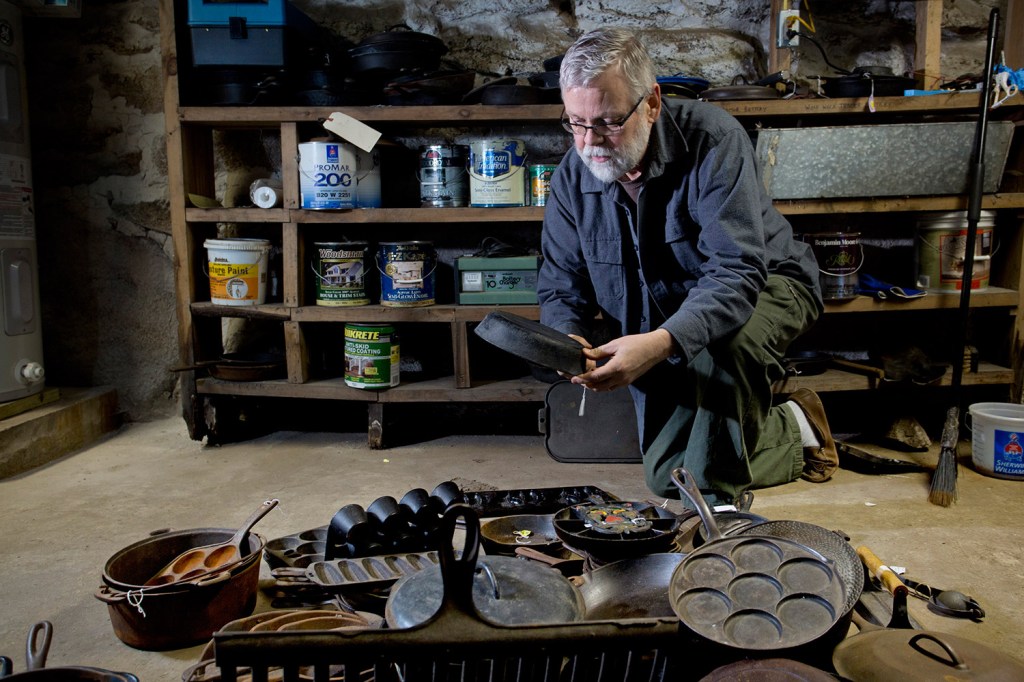
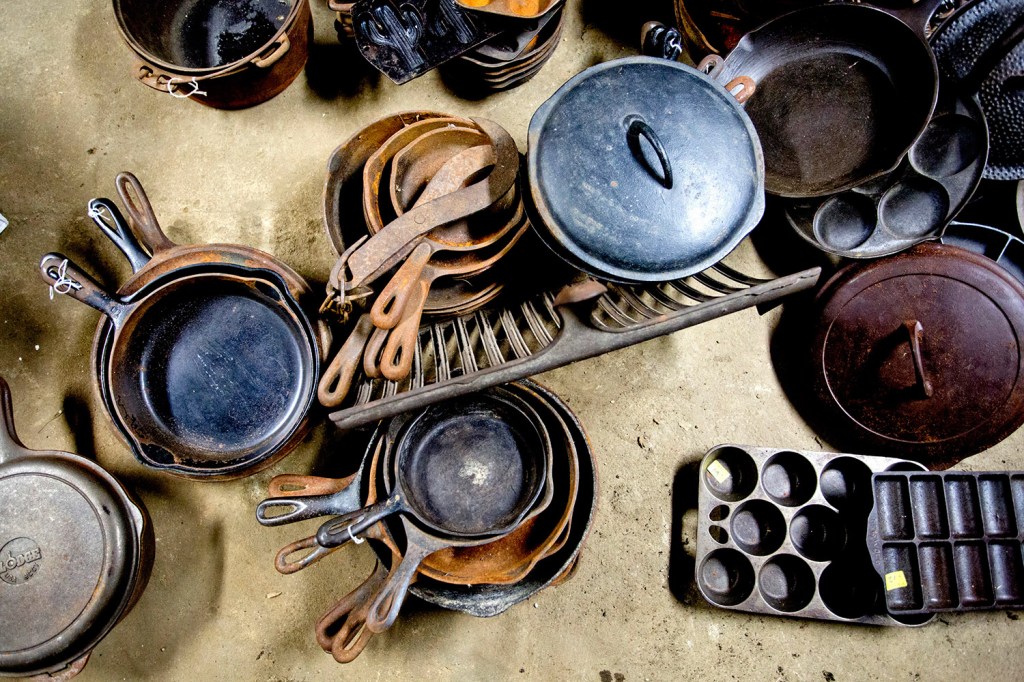
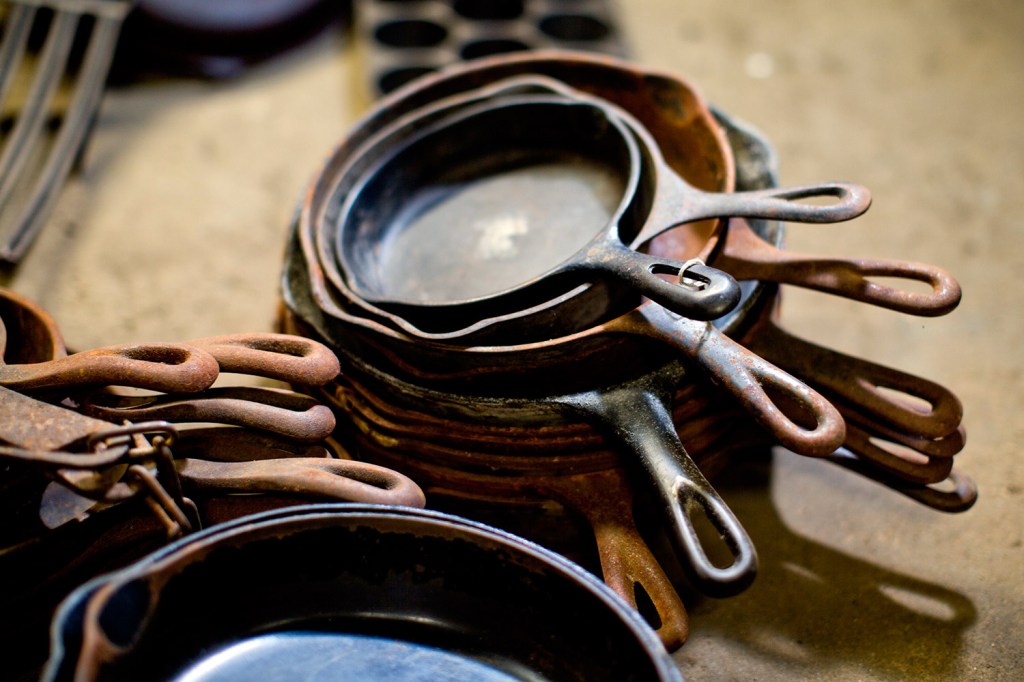

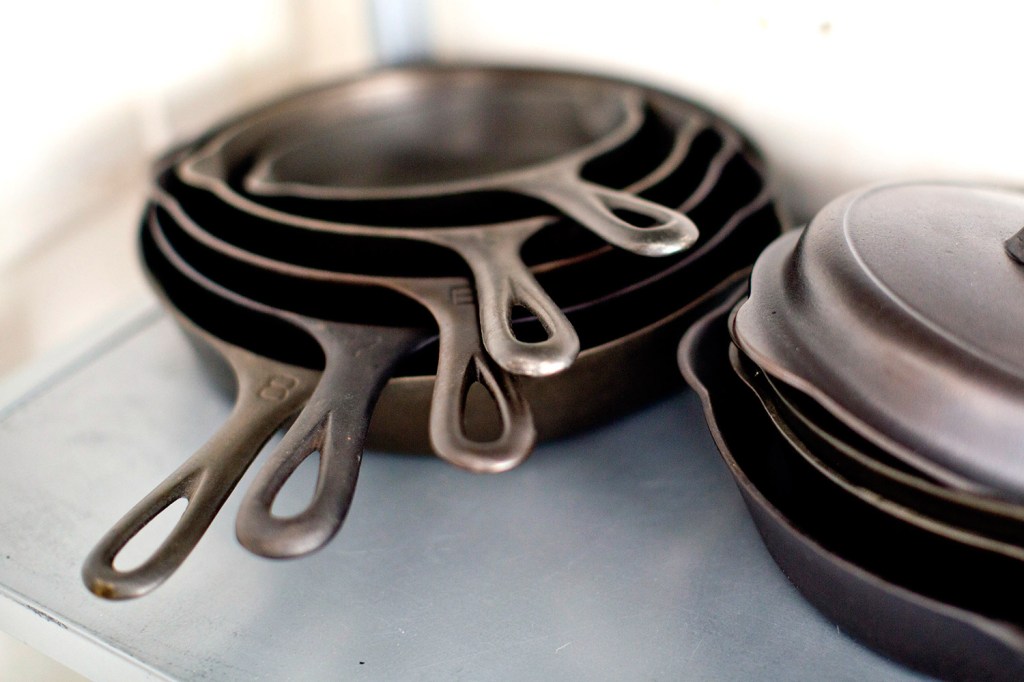
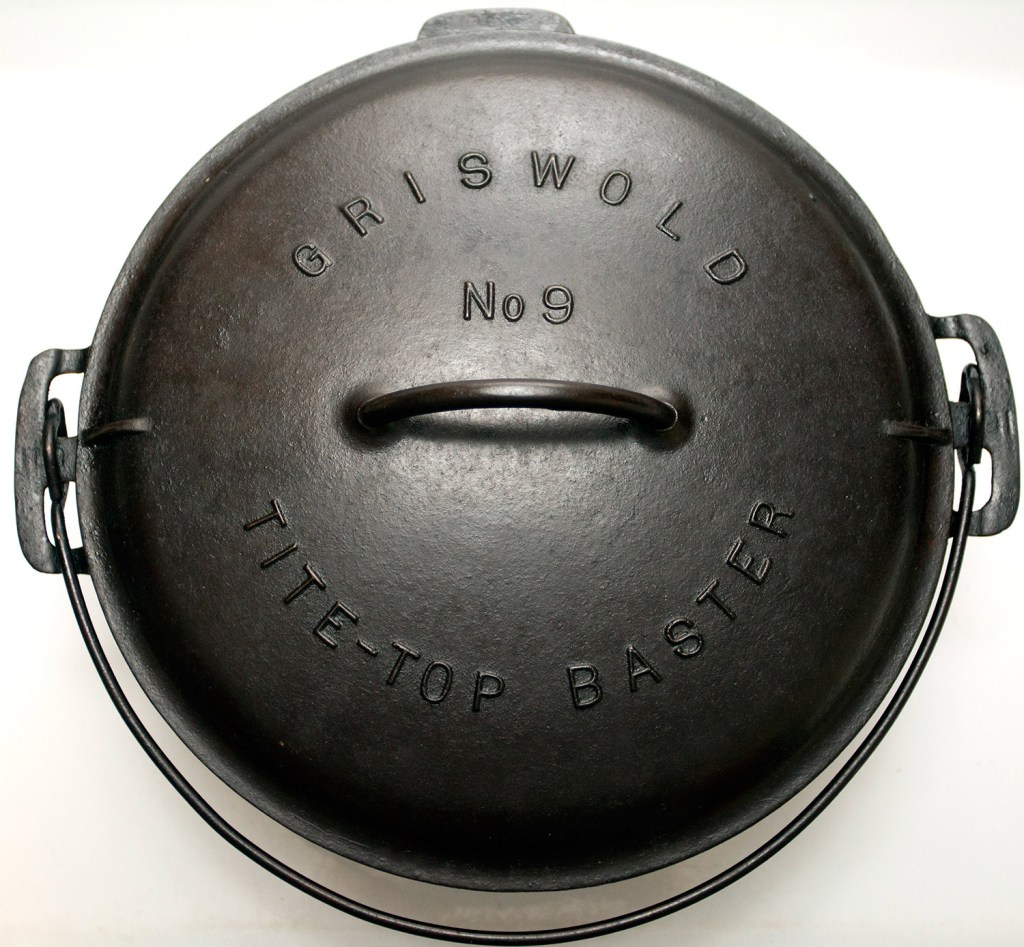
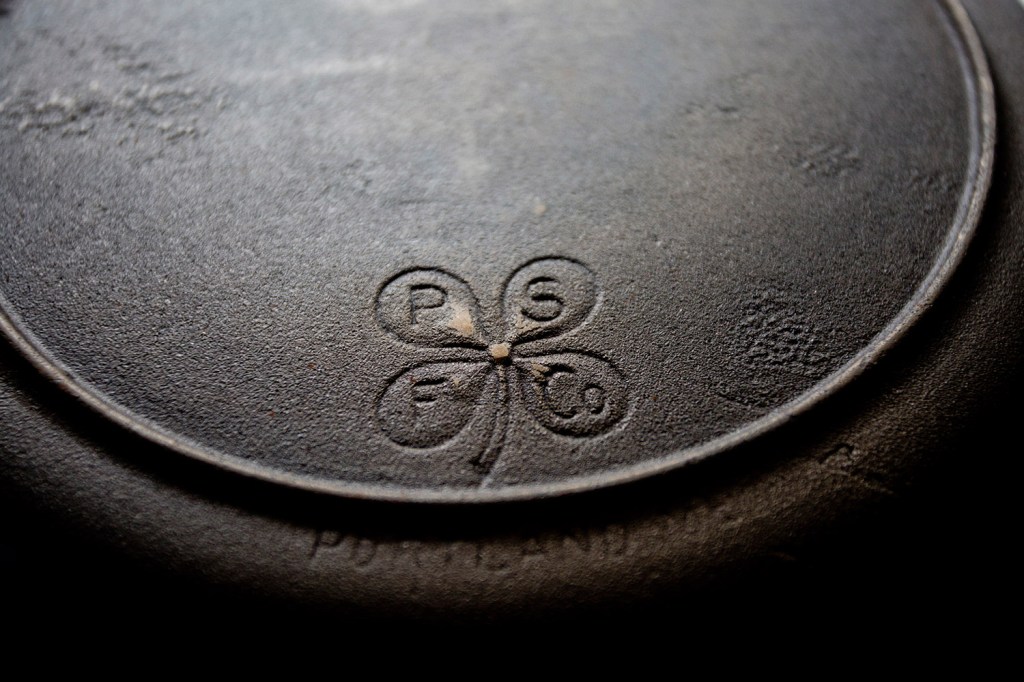
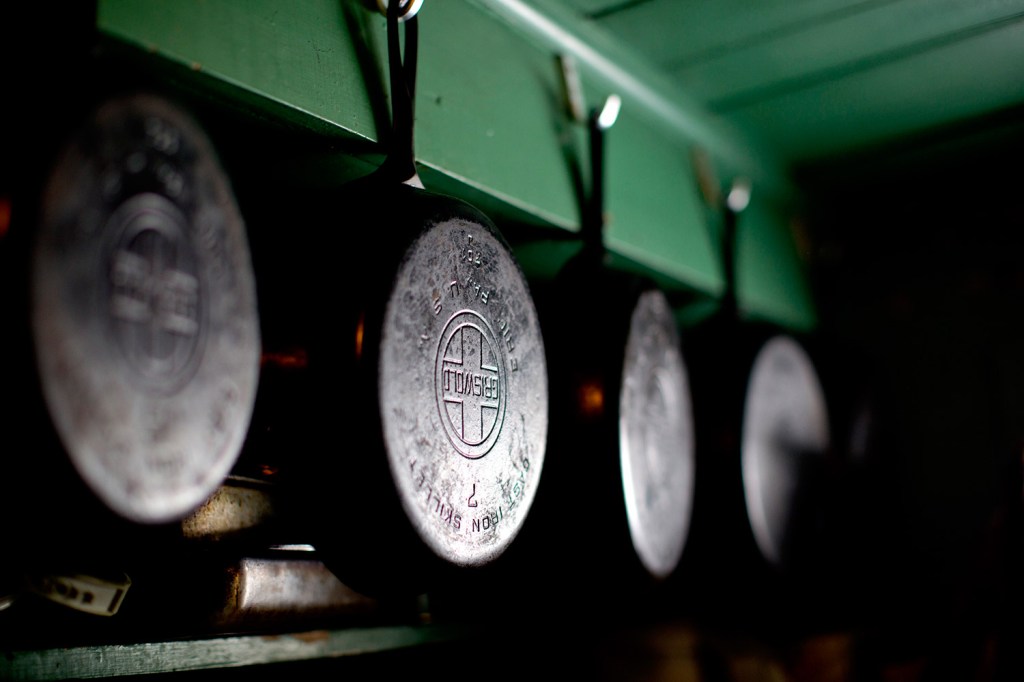

Success. Please wait for the page to reload. If the page does not reload within 5 seconds, please refresh the page.
Enter your email and password to access comments.
Hi, to comment on stories you must . This profile is in addition to your subscription and website login.
Already have a commenting profile? .
Invalid username/password.
Please check your email to confirm and complete your registration.
Only subscribers are eligible to post comments. Please subscribe or login first for digital access. Here’s why.
Use the form below to reset your password. When you've submitted your account email, we will send an email with a reset code.